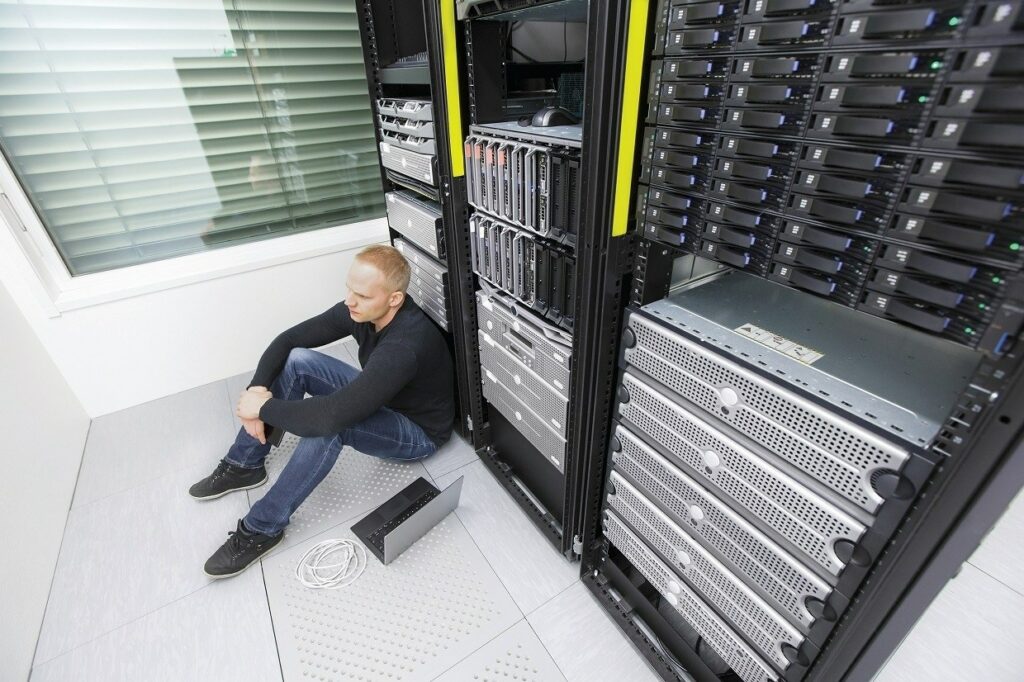
Cisco Meraki is primarily known for its cloud-managed networks and services. But even though its cloud technology has grown in use and prominence globally, it is still a relatively new concept for many business owners, especially those who know little about modern IT and networking solutions. They have misconceptions about the cloud, such as network users can’t access business data if the network-to-cloud link is down. Others worry that the cloud isn’t the safest place to store critical business information, given that cybercriminals are now using sophisticated methods to breach secure networks and steal data.
Many of these worries, however, are untrue. A secure network can keep functioning efficiently even if the connection to the cloud is interrupted because the cloud is only used for management and network configuration. All other processes like user authentication, VPN tunneling, firewalls, and security protocols will still be operational. Meraki cloud security is top-notch because only network management information is transferred from the devices to the cloud, not personal data from users or customers.
Perhaps the best reason for consulting a Meraki partner and investing in a Cisco Meraki network infrastructure is the convenience and ease of installation and management. The company succeeded in making its products and cloud networking solutions accessible even to people without much knowledge about IT or how the cloud works. More importantly, Cisco Meraki delivers product lines that satisfy the more discerning and knowledgeable IT customers.
Below, we discuss the simplicity and convenience of Cisco Meraki ecosystems, which are evident in four areas: Cisco Meraki configuration, product licensing renewal, network and physical security, and Cisco Meraki mobile device management.
Configuring new devices into a local area network as it expands is a labor-intensive and time-demanding task when done traditionally. IT technicians must manually install and configure each device upon linking to the network. While manageable when installing a few new appliances at a time, it becomes a burden when adding 50 devices at once or setting up networks in multiple other locations. All the travel expenses and hours spent on repetitive work will cost an enterprise a lot of money.
In contrast, a Cisco Meraki setup allows IT teams to install and configure new devices and establish new networks remotely. There’s no need for a team to travel around the country, for example, installing appliances and setting up secure networks for multiple-location enterprises. Cisco Meraki configuration can be done in minutes, minimizing the cost, time, and resources spent on expanding, troubleshooting, or setting up a new network.
Cisco Meraki appliances and software programs require a license to get the full suite of services. IT teams must keep track of the expiration dates of these licenses to ensure that business-critical systems can run smoothly without interruption. As with manual device configuration, looking after ten or fewer devices is manageable, but not if you have a network with hundreds or thousands of individually licensed devices like switches, routers, CCTV cameras and security appliances, sensors, wireless access points (APs), cellular gateways, and more.
License tracking and renewal are crucial for maintaining 100% network functionality. To simplify licensing, Cisco Meraki offers a Co-Term Licensing option, which allows organizations to buy a single license for all Meraki devices. It simplifies the task of monitoring expiration dates and renewing licenses as it eliminates the need to register devices individually. Opting for Co-Term Licensing unifies all expiration dates, making it ideal for large networks and multi-location businesses that manage hundreds of licensed devices.
A Per-Device Licensing option is also available for customers who prefer it. For reference, Cisco Meraki MR, MV, MT, and MG devices can be licensed individually, while Meraki MX appliances are licensed per feature.
As the industry’s largest cloud networking provider, Cisco Meraki services millions of networks worldwide for businesses of all sizes and industries. They’ve been providing robust cloud services for over a decade, becoming an industry leader in cloud networking and cloud networking security solutions.
The Meraki cloud is a low-risk service and an excellent introduction to cloud technology for organizations transitioning into cloud-based networking for the first time and users who are skeptical about the data protection it promises.
As proof of its security, Cisco Meraki solutions are PCI compliant. PCI (also PCI DSS or Payment Card Industry Data Security Standard) is the basis for information security technology that facilitates credit card transactions. Companies and organizations with a comprehensive Meraki ecosystem can pass a Level 1 PCI audit, the most rigorous assessment level for network security, cardholder information security, access control measure implementation, and network security monitoring.
Since all devices are centrally managed through the Cisco Meraki device management dashboard, deploying, monitoring, and verifying PCI-compliant networks within an organization is easier and faster. IT teams can check if specific networks fail security standards (i.e., a critical on-site appliance is offline or an application that facilitates security is corrupted or inaccessible).
In the same manner that enforcing security protocols in Cisco Meraki networks is simple and convenient, managing an entire organization is easier with the Cisco Meraki Dashboard. Its user-friendly interface and comprehensive views show vital information at a glance, making managing multiple networks, regardless of size, a breeze. IT technicians have visibility over all devices and can manage or troubleshoot them remotely.
The Cisco Meraki Mobile Device Management (MDM) is another feature that simplifies network management. Accessible via the Systems Manager app on the Dashboard, the MDM enables IT teams to automate network security, manage all endpoints, and control access to applications remotely on one platform. For example, if anything needs adjusting or modifying post-installation, there’s no need to dispatch a technician to the location because IT teams can update configurations hands-free.
Cloud-first organizations and businesses enjoy many benefits, from management flexibility to high-efficiency network management. These are enough to consult an experienced Meraki partner and explore how Cisco Meraki solutions can be integrated into your operations.
If you want convenience, time savings, reduced operational costs, and improved efficiency and productivity in your business operations, consider transitioning into a Cisco Meraki cloud network.
Stratus Information Systems, a certified Meraki partner offering project consulting, acquisition, deployment, management, and education services, can help. We serve clients with global locations, empowering them with reliable cloud technologies to remotely manage and troubleshoot networks and devices.
Fill out our contact form and receive a response within 24 hours. Request a free trial to test the capabilities of Cisco Meraki and experience the benefits it can bring to your operations.

Stay informed about our newest releases and updates